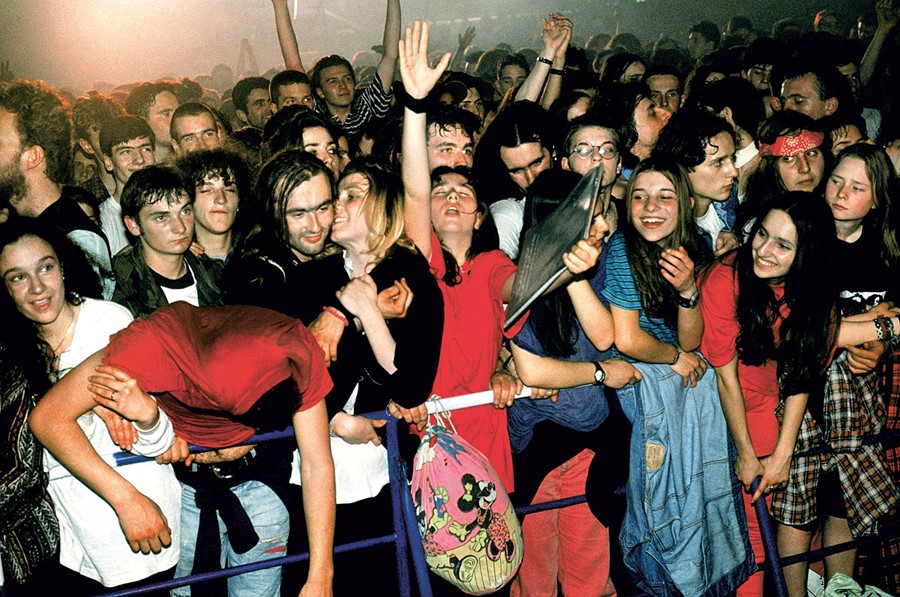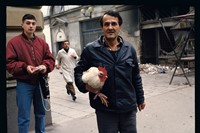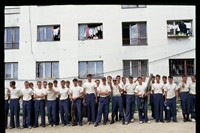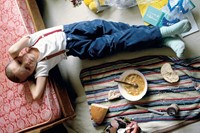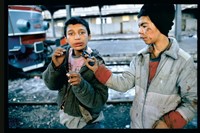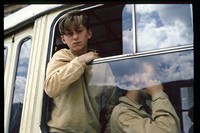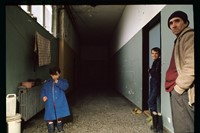In Road to Nowhere, Robin Graubard documents the conflicts that followed the fall of the USSR, and the subsequent rise of a vibrant post-Soviet culture
In the 1990s, photographer Robin Graubard left New York – where she’d come of age against the backdrop of 1960s counterculture and 1970s punk – and bought an airline ticket to Prague. “I decided to go after meeting a group of women in a park outside the UN Building,” she writes in her newly-published photo diary from the period, titled Road to Nowhere. “They were talking about how no one was covering the war in Sarajevo.”
Graubard ended up staying for several years. As planned, she documented the Bosnian War, staying on the frontline in a Sarajevo hotel besieged with stray bullets and shelling. Travelling solo, she lacked the protections granted to more established journalists, who drove in armoured cars, and to visit the hospital she often walked from one side of the city to the other on foot, through the notoriously deadly Sniper Alley. “Somehow, I made it out,” she reflects, looking back.
The conflict in Sarajevo wasn’t all Graubard witnessed during her years in Eastern Europe, however. The Soviet Union had officially dissolved the year before she arrived, and its collapse had rippled through the region, escalating existing ethnic tensions and sparking fresh conflicts. From 1992 to 1996, Graubard photographed the Kosovo uprising and wars in former Yugoslavia, alongside “oil smuggling in Romania, runaways and orphans living in train station tunnels in Bucharest”, and people living on the street for the first time in a new, post-Communist society.
Published today by Loose Joints, Road to Nowhere marks the first major publication of Graubard’s work, showcasing 130 striking photos from the photographer’s time in Eastern Europe during the mid-90s. Captured in vibrant colour, city streets are filled with angry and violent protests, hungry citizens are seen taking cover in underground shelters, and highways are lined with refugees displaced by conflict.

In 2022, of course, many of these images are particularly resonant due to parallels with the Russian invasion of Ukraine. Portraits of children in bunkers or repurposed school halls, and landscapes showing bombed-out skyscrapers mirror scenes shared via media outlets or firsthand on social media, almost 30 years later. As Graubard writes in a recent diary entry, penned while Putin stationed troops on the border of Ukraine in early 2022: “Things seem to go full circle.”
At the same time, many of the images in the photo diary present another, more optimistic reality. Kids play arcade games in camo cargo pants and Public Enemy T-shirts; others kiss, or clutch vinyl in the front row of a concert. At a school for girls just outside Prague, Graubard remembers: “All the girls let loose as I began photographing. They jumped onto their desks and scrawled on the walls with lipstick.” While the post-Soviet landscape of Road to Nowhere is often bleak, it is also populated by these emerging subcultures – led by young people across Russia, Czechoslovakia, Bulgaria, Serbia, Bosnia, and other Balkan states – and imbued with their sense of hope, and yearning for change.
Road to Nowhere by Robin Graubard is published by Loose Joints.
